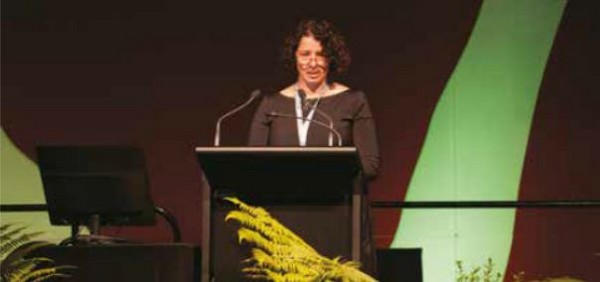Collaborating with top teams
Being part of a 125-year-old global forest science network
Scion’s ties with the International Union of Forest Research Organizations (IUFRO) stretch back to the 1970s. Today, Scion scientists participate at division and task force level, and Principal Scientist and entomologist Dr Ecki Brockerhoff sits on the IUFRO Board.
IUFRO is a voluntary, global network for forest science cooperation, uniting more than 15,000 scientists in almost 700 member organisations in over 110 countries. IUFRO’s goal is to advance research and knowledge sharing, and to foster the development of science-based solutions to forest-related challenges for the benefit of forests and people worldwide.
Nine divisions cover IUFRO’s activity in key forestry research fields supporting collaborative work and linking research groups. Other IUFRO work is managed by temporary task forces that coordinate cooperation and interdisciplinary research between two or more divisions. The task forces focus on key emerging issues. For instance, Dr Elspeth MacRae, General Manager Manufacturing and Bioproducts was the deputy task leader for the IUFRO Forest Bioenergy Task Force from 2010 to 2014.
Division 7, Forest Health, focusses on the effects and control of pathogens, insects and pollution. Ecki is division coordinator and is involved with the two task forces Contribution of Biodiversity to Ecosystem Services in Managed Forests, and Forests and Biological Invasions. In the past year, Ecki has co-authored four papers and contributed to special issues of the journals Biodiversity and Conservation and Biological Invasions.
Dr Peter Clinton, Science Leader for Forest Systems, is active in Division 8, Forest Environment, which includes study of forest ecosystems, natural disasters, fire, climate and mitigation measures. Wind damage is one of these risks. Research Leader for Systems Biology and Risk Dr John Moore says collaboration in understanding and developing approaches to manage the wind damage in New Zealand forests has bolstered local industry capability in this area. John also contributes to wood quality interactions within Division 5, Forest Products.
Forest policy and economics is covered in Division 9, with a concentration on forest sector analysis, the social and economic aspects of forestry, policy and governance and environmental legislation. Dr Tim Payn, Research Leader for Enabling Environments, says he values the links to more fundamental science that working with IUFRO brings, and the alternative perspectives that can be gained from working with different forest types and approaches to forest management.
Other Scion staff currently are IUFRO office holders, typically as coordinators and deputies of research units within divisions: Dr Heidi Dungey (within Division 2, Physiology and Genetics), Dr Beccy Ganley (Division 7), and Drs Richard Yao and Peter Edwards (Division 9).
Working with IUFRO gives Scion the opportunity to build on a large foundation of knowledge, benefit from reciprocal sabbaticals, contribute to publications and conferences that influence national and international policy. The result of these collaborative relationships connecting Scion with like researchers around the world is continual innovation across our work.

